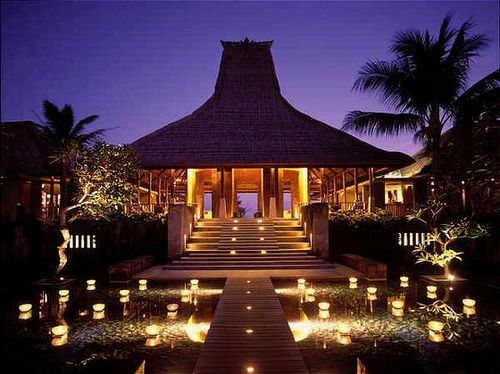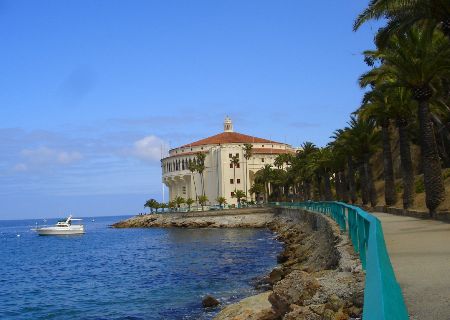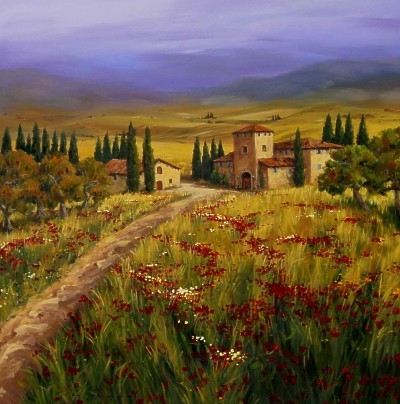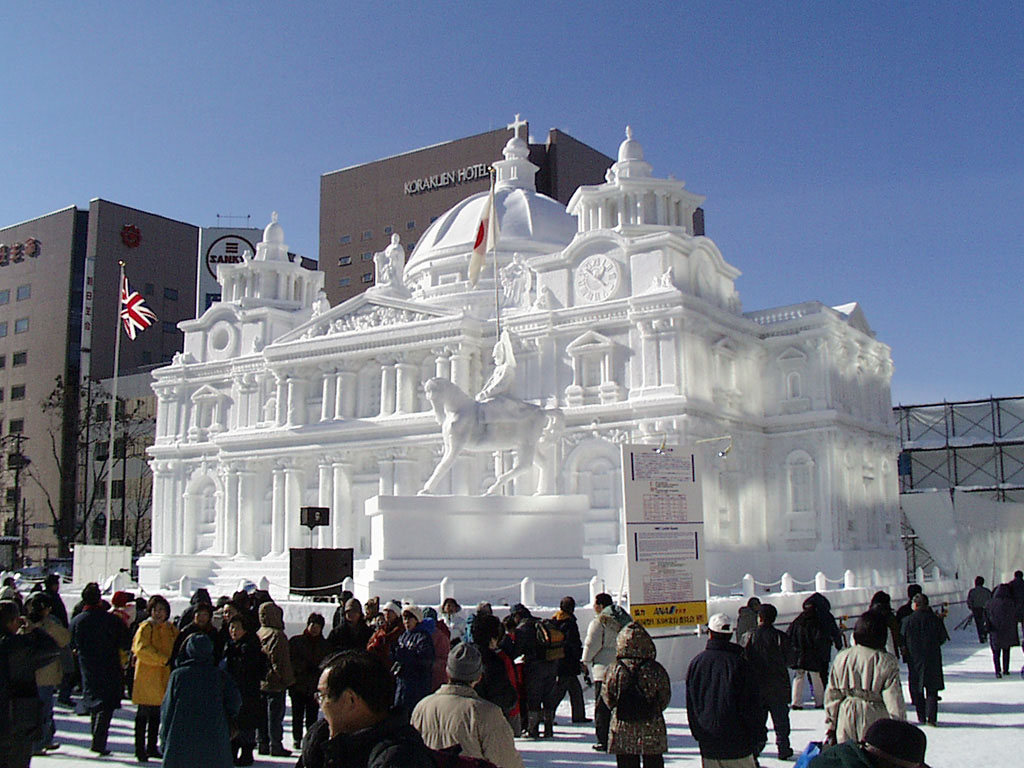 Ubud is a town on the Indonesian island of Bali in Ubud District, located amongst rice paddies and steep ravines in the central foothills of the Gianyar regency. One of Bali's major arts and culture centres, it has developed a large tourism industry.
Ubud has a population of about 8,000 people, but it is becoming difficult to distinguish the town itself from the villages that surround it.The main street is Jalan Raya Ubud (Jalan Raya means main road), which runs east-west through the center of town. Two long roads, Jalan Monkey Forest and Jalan Hanoman, extend south from Jalan Raya Ubud. Puri Saren Agung is a large palace located at the intersection of Monkey Forest and Raya Ubud roads. The home of Tjokorda Gede Agung Sukawati (1910-1978), the last "king" of Ubud, it is now occupied by his descendants and dance performances are held in its courtyard. It was also one of Ubud's first hotels, dating back to the 1930s.
The Ubud Monkey Forest is a sacred nature reserve located near the southern end of Jalan Monkey Forest. It houses a temple and approximately 340 Crab-eating Macaque (Macaca fascicularis) monkeys.
Ubud tourism focuses on culture, yoga and nature. In contrast to the main tourist area in southern Bali, the Ubud area has forests, rivers, cooler temperatures and less congestion although traffic has increased dramatically in the 21st century. A number of smaller "boutique"-style hotels are located in and around Ubud, which commonly offer spa treatments or treks up Ubud's mountains.
The Moon of Pejeng, in nearby Pejeng, is the largest single-cast bronze kettle drum in the world, dating from circa 300BC. It is a popular destination for tourists interested in local culture, as is the 11th century Goa Gajah, or 'Elephant Cave', temple complex.
Ubud is a town on the Indonesian island of Bali in Ubud District, located amongst rice paddies and steep ravines in the central foothills of the Gianyar regency. One of Bali's major arts and culture centres, it has developed a large tourism industry.
Ubud has a population of about 8,000 people, but it is becoming difficult to distinguish the town itself from the villages that surround it.The main street is Jalan Raya Ubud (Jalan Raya means main road), which runs east-west through the center of town. Two long roads, Jalan Monkey Forest and Jalan Hanoman, extend south from Jalan Raya Ubud. Puri Saren Agung is a large palace located at the intersection of Monkey Forest and Raya Ubud roads. The home of Tjokorda Gede Agung Sukawati (1910-1978), the last "king" of Ubud, it is now occupied by his descendants and dance performances are held in its courtyard. It was also one of Ubud's first hotels, dating back to the 1930s.
The Ubud Monkey Forest is a sacred nature reserve located near the southern end of Jalan Monkey Forest. It houses a temple and approximately 340 Crab-eating Macaque (Macaca fascicularis) monkeys.
Ubud tourism focuses on culture, yoga and nature. In contrast to the main tourist area in southern Bali, the Ubud area has forests, rivers, cooler temperatures and less congestion although traffic has increased dramatically in the 21st century. A number of smaller "boutique"-style hotels are located in and around Ubud, which commonly offer spa treatments or treks up Ubud's mountains.
The Moon of Pejeng, in nearby Pejeng, is the largest single-cast bronze kettle drum in the world, dating from circa 300BC. It is a popular destination for tourists interested in local culture, as is the 11th century Goa Gajah, or 'Elephant Cave', temple complex.
Thursday, May 27, 2010
Ubud Is A Town of Bali
 Ubud is a town on the Indonesian island of Bali in Ubud District, located amongst rice paddies and steep ravines in the central foothills of the Gianyar regency. One of Bali's major arts and culture centres, it has developed a large tourism industry.
Ubud has a population of about 8,000 people, but it is becoming difficult to distinguish the town itself from the villages that surround it.The main street is Jalan Raya Ubud (Jalan Raya means main road), which runs east-west through the center of town. Two long roads, Jalan Monkey Forest and Jalan Hanoman, extend south from Jalan Raya Ubud. Puri Saren Agung is a large palace located at the intersection of Monkey Forest and Raya Ubud roads. The home of Tjokorda Gede Agung Sukawati (1910-1978), the last "king" of Ubud, it is now occupied by his descendants and dance performances are held in its courtyard. It was also one of Ubud's first hotels, dating back to the 1930s.
The Ubud Monkey Forest is a sacred nature reserve located near the southern end of Jalan Monkey Forest. It houses a temple and approximately 340 Crab-eating Macaque (Macaca fascicularis) monkeys.
Ubud tourism focuses on culture, yoga and nature. In contrast to the main tourist area in southern Bali, the Ubud area has forests, rivers, cooler temperatures and less congestion although traffic has increased dramatically in the 21st century. A number of smaller "boutique"-style hotels are located in and around Ubud, which commonly offer spa treatments or treks up Ubud's mountains.
The Moon of Pejeng, in nearby Pejeng, is the largest single-cast bronze kettle drum in the world, dating from circa 300BC. It is a popular destination for tourists interested in local culture, as is the 11th century Goa Gajah, or 'Elephant Cave', temple complex.
Ubud is a town on the Indonesian island of Bali in Ubud District, located amongst rice paddies and steep ravines in the central foothills of the Gianyar regency. One of Bali's major arts and culture centres, it has developed a large tourism industry.
Ubud has a population of about 8,000 people, but it is becoming difficult to distinguish the town itself from the villages that surround it.The main street is Jalan Raya Ubud (Jalan Raya means main road), which runs east-west through the center of town. Two long roads, Jalan Monkey Forest and Jalan Hanoman, extend south from Jalan Raya Ubud. Puri Saren Agung is a large palace located at the intersection of Monkey Forest and Raya Ubud roads. The home of Tjokorda Gede Agung Sukawati (1910-1978), the last "king" of Ubud, it is now occupied by his descendants and dance performances are held in its courtyard. It was also one of Ubud's first hotels, dating back to the 1930s.
The Ubud Monkey Forest is a sacred nature reserve located near the southern end of Jalan Monkey Forest. It houses a temple and approximately 340 Crab-eating Macaque (Macaca fascicularis) monkeys.
Ubud tourism focuses on culture, yoga and nature. In contrast to the main tourist area in southern Bali, the Ubud area has forests, rivers, cooler temperatures and less congestion although traffic has increased dramatically in the 21st century. A number of smaller "boutique"-style hotels are located in and around Ubud, which commonly offer spa treatments or treks up Ubud's mountains.
The Moon of Pejeng, in nearby Pejeng, is the largest single-cast bronze kettle drum in the world, dating from circa 300BC. It is a popular destination for tourists interested in local culture, as is the 11th century Goa Gajah, or 'Elephant Cave', temple complex.
Santa Catalina Island California
 Santa Catalina IslandSanta Catalina Island, often called Catalina Island, or just Catalina, is a rocky island off the coast of the U.S. state of California. The island is 22 miles (35 km) long and eight miles (13 km) across at its greatest width. The island is located about 22 miles (35 km) south-southwest of Los Angeles, California. The highest point on the island is 2097 ft (639 m) Mt. Orizaba, at 33°22′29.7″N 118°25′11.6″W / 33.374917°N 118.419889°W / 33.374917; -118.419889.Part of the Channel Islands of California archipelago, Catalina falls under the jurisdiction of Los Angeles County. Most of the island is owned by the Catalina Island Conservancy.The total population as of the 2000 census was 3,696 persons with almost 85 percent living in its only city of Avalon (pop. 3,127, with another 195 south of the city outside of the city limits). The second center of population is the unincorporated town of Two Harbors, in the north, with a population of 298. Development occurs also at the smaller settlements Rancho Escondido and Middle Ranch. The remaining population is scattered over the island between the two population centers. The island has an overall population density of 49.29/mi² (19.03/km²).
Santa Catalina IslandSanta Catalina Island, often called Catalina Island, or just Catalina, is a rocky island off the coast of the U.S. state of California. The island is 22 miles (35 km) long and eight miles (13 km) across at its greatest width. The island is located about 22 miles (35 km) south-southwest of Los Angeles, California. The highest point on the island is 2097 ft (639 m) Mt. Orizaba, at 33°22′29.7″N 118°25′11.6″W / 33.374917°N 118.419889°W / 33.374917; -118.419889.Part of the Channel Islands of California archipelago, Catalina falls under the jurisdiction of Los Angeles County. Most of the island is owned by the Catalina Island Conservancy.The total population as of the 2000 census was 3,696 persons with almost 85 percent living in its only city of Avalon (pop. 3,127, with another 195 south of the city outside of the city limits). The second center of population is the unincorporated town of Two Harbors, in the north, with a population of 298. Development occurs also at the smaller settlements Rancho Escondido and Middle Ranch. The remaining population is scattered over the island between the two population centers. The island has an overall population density of 49.29/mi² (19.03/km²).
Monday, May 17, 2010
Kate Baumgartner: Religious Asia
 Photo © Kate Baumgartner-All Rights Reserved
Photo © Kate Baumgartner-All Rights ReservedKate Baumgartner describes herself as an avid photographer, and that may well be an understatement.
Based in Hong Kong, she photographed to Cambodia, Burma, India, China, Namibia, Singapore, Sri Lanka and Vietnam...returning with splendid photographs, like the one above of the Cao Dai monks. Cao Dai is the relatively new, syncretist, monotheistic religion established in 1926 in Vietnam.
Take a look at Kate's gallery of photographs under the Religion category, and you'll find many of the different faiths and traditions of Asia, including the unusual rituals during the Thaipusam festival in Singapore, which is celebrated mostly by the Tamil community. On the day of the festival, devotees will shave their heads and undertake a pilgrimage during which some will engage in self-mortification by piercing their skin, tongue or cheeks with skewers.
Paolo Evangelista: Zanzibar
 Photo © Paolo Evangelista-All Rights Reserved
Photo © Paolo Evangelista-All Rights ReservedPaolo Evangelista holds degrees in music and anthropology, but decided to pack his bags, his espresso machine (after all, he's Italian) and his cameras to live in Australia for a while. Currently based in Perugia, he traveled to Zanzibar where most of his galleries are of.
Most interesting are Paolo's street photographs in Stone Town.
It's the old city and cultural heart of Zanzibar, where nothing much has changed in the last 200 years. Its winding alleys, bustling bazaars, lovely mosques and typical Arab houses are exquisite backdrops for this sort of photography. Its name conjures sea traders, explorers, Sultans and the fragrance of exotic spices. It was also declared a World Heritage Site by UNESCO.
Also of interest to me is Paolo's gallery of Sydney's Chinese market, since I photograph in New York Chinatown.
Sunday, May 16, 2010
Test Shots: Panasonic GF1 + 20mm f1.7 Lens


Here's a couple of "on-the-go" photographs made with my brand-new Panasonic GF1/20mm 1.7 lens on Bleecker street in NYC's West Village. There was a couple of garbage bags on the sidewalk which I had to frame out of the top photograph by chopping off the woman's shoes. The second is of a woman balancing 4 (actually 5, I think) lemonades and seemingly on collision course with another...it didn't happen.
I shot these with the GF1's Intelligent Auto mode on; essentially the "point & shoot" mode, which I'm using for a couple of days until I get used to its handling. The IA mode allows me to photograph in both RAW and jpeg. The images above are the jpeg versions (out of the camera), and were slightly sharpened with CS. Click on them for a larger size.
In my opinion, the GF1 is a hybrid between a point & shoot and a rangefinder, and is ideal to carry on photo walk-abouts. It's probably a camera that P&S shooters will consider as a step-up, while DSLR users will view it either as a backup or as a carry-around tool. The shutter lag isn't too bad...in fact, I didn't find it to be much of a problem. It's there, but it's not significant.
It still bothers me not having a viewfinder (a Panasonic EVF or Voigtlander OVF may be my next purchase) to look through, but perhaps I'll get used to it. One of the notable advantages of this camera is, when photographed, people don't seem fazed (or threatened) by it as compared to a DSLR.
I carry it on a hand strap, and I find that it doesn't nestle easily in my hand. Maybe I'll get used to it in a few days.
Am I in love with the GF1? Not yet...I like it, and getting used to it...but it's not love (yet).
Saturday, May 15, 2010
Cyprus: Fantastic Island Holiday Destination
Jehad Nga Talks to BJP

"I respond more to fashion and fine-art, carrying these fields and variables in photojournalism." -Jehad Nga
The British Journal of Photography (which revamped its website) published an interview with Jehad Nga, one of my favorite photographers. This blog featured many posts on Nga, and his distinctive chiaroscuro style.
Titled From Kansas To Nairobi, the recent interview sheds a light on Nga's decision to join the Institute for Artist Management instead of VII and Magnum.
Nga first visited the Middle East in 2001 spending months in different medical volunteering positions in Gaza. When he interned at Magnum Photos in 2002, he was also training to become an Emergency Medical Technician. But since 2004, when he moved to East Africa, he's been dedicating most of his time to photography, working regularly for the New York Times.
Via photojournalism links
Friday, May 14, 2010
MSF's Starved For Attention

"this year 195,000,000 children will suffer from malnutrition"and so starts “Starved for Attention” the extremely well produced multimedia campaign by Doctors Without Borders/Médecins Sans Frontières (MSF) and VII Photo which exposes the neglected and largely invisible crisis of childhood malnutrition.
The campaign aims to present a series of multimedia documentaries of still photography and video from the well-known photojournalists at the VII Agency, such as Marcus Bleasdale, Jessica Dimmock, Ron Haviv, Antonin Kratochvil, Franco Pagetti, Stephanie Sinclair, and John Stanmeyer.
The first multimedia reportage is titled Frustration and is by Marcus Bleasdale, who narrates it out of Djibouti.
Bookmark this website, since the remaining reportages will be featured over the course of the coming months.
For more background on the project, JournalismNow features an interview with Ron Haviv, which touches on his work in Bangladesh for Starved For Attention.
New Handheld Recorder Zoom H1
 Photo Courtesy Samson Audio
Photo Courtesy Samson AudioAy...I hate innovation. Well, not really of course, but a new (and occasionally improved) gadget always turns up a few months after a purchase, and this is annoying. Why can't the stuff I buy stay fresh and on the cutting edge of things all the time?
I'm kidding...sort of. But here's the H1, a new handheld audio recorder from Samson Audio, which may not have the top of the range recording schemes, but is a handy portable stereo recorder at an unheard-of $99 price.
It's supposed to give you 10 hours of battery life on a single AA cell, and can accommodate up to 32GB of removable microSDHC storage. Its microphones are configured in an X/Y pattern for optimum stereo imaging.
At this price (and assuming its performance is as good as Samson claims), it'll be a hit for entry-level multimedia photographers, and perhaps many others. It's available on July 30th, so keep your eye on it if you're in the market for a low cost handheld recorder.
I've read Samson's blurb, but didn't find the accessory on the H1's list that allows it to be set on top of a DSLR's hot shoe as shown in the above photograph. The H1 has a tripod mount on its back, so this doodad connects it to the hot shoe.
Thursday, May 13, 2010
Wednesday, May 12, 2010
Selena Burgas Beach Bulgaria
Best Indian Beach Destinations
Favorite Indian Beach DestinationsYou basically have two best options of Goa and Kerala if you are looking for the best beach vacations spot in India. It is also depends completely on what type of person you are and what type of environment suits you.Firstly if we talk about Goa beach vacations, tourists, who really want to have fun by playing and by enjoying good atmosphere, can go to Goa beaches. In Goa beaches, you can enjoy everything that you want in a perfect vacation. You can drink different types of cocktails and mock tails, you can swim anytime you want and also you can celebrate with your family and friends. We can say that Goa beaches are very similar to Miami Beach vacation and to a Caribbean trip. People who want to go to a peaceful place; they can hang out on Goa lonely beaches which are the famous beaches.If we talk about Kerala beaches, these beaches have a higher class crowd of tourist and are also less crowded. There are many awesome and beautiful beaches at the west coast of Kerala with the white sand. The beaches in Kerala are very calming and relaxing, you can swim over there and the good part is that drinking is not allowed on the beaches. Ayurvedic massage treatments are also given by some of the beaches in Kerala. You would found silence and beauty on the beaches of Kerala moreover; food, arts and local culture can also be enjoyed.We all know how quickly time flies, so start planning that vacation getaway right now. There's an ideal beach vacation where you can enjoy your time off to the fullest just waiting for you to arrive!
In The Shadow of Everest At RMA

The Rubin Museum of Art in New York City is showing the photographs of Tom Wool in an exhibition In The Shadow of Everest, which runs until July 26, 2010.
Coming from a fashion photography background, Tom Wool has devoted himself to work for humanitarian organizations. Using a medium format Hasselblad, he photographed Tibet's Rongbuk Valley and its inhabitants in May 2001.
The valley stretches about 30 miles from the base of Mount Everest on the north side, and is home to some 3,000 Tibetans. It's considered sacred, with deep religious connotations to the Tibetans. The valley is home to the Rongbuk Monastery, the highest of any in the world at 17,000 feet above sea level.
Saturday, May 8, 2010
Mark Thomas: Haridwar Kumbh Mela

Here's another feature from the recent Kumbh Mela which was held earlier this year in Haridwar, North India.
This body of work by photographer Mark Thomas is titled Kumbh Mela 2010, and is mainly of portraits he made during that religious event.
Mark Thomas is a photojournalist and a multimedia expert, whose work appeared in various publications, including The Boston Globe and National Geographic News. He professes a deep passion for documenting and photographing India.
His Kumbh Mela 2010 gallery consists of portraits of naga babas, the ash-covered sadhus who belong to the Shaivite sect, as well as pilgrims.
Mark's website has other Indian-centric galleries such as Faces of Kashi, Visions of Kashi and Child Labor.
A worthwhile website to bookmark for Indiaphiles.
Subscribe to:
Posts (Atom)








